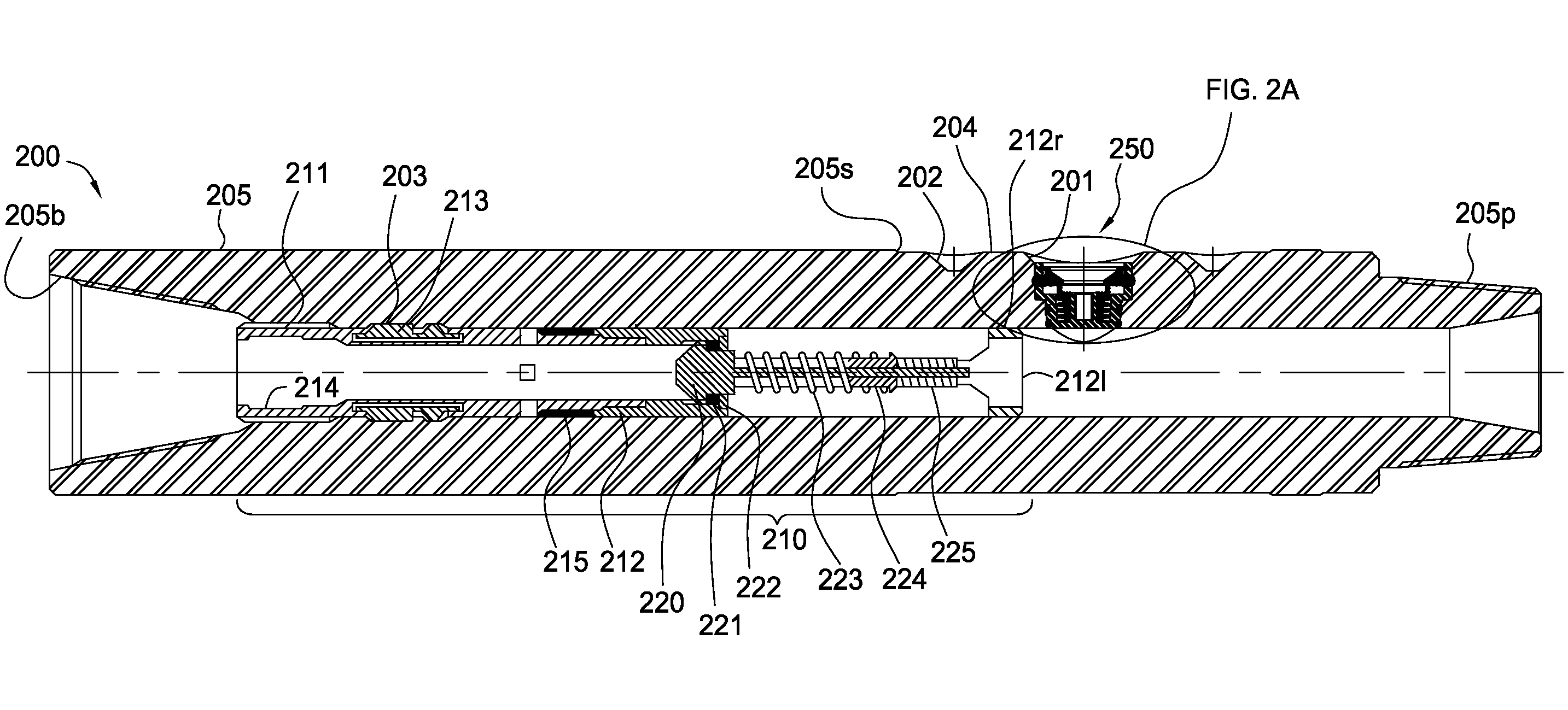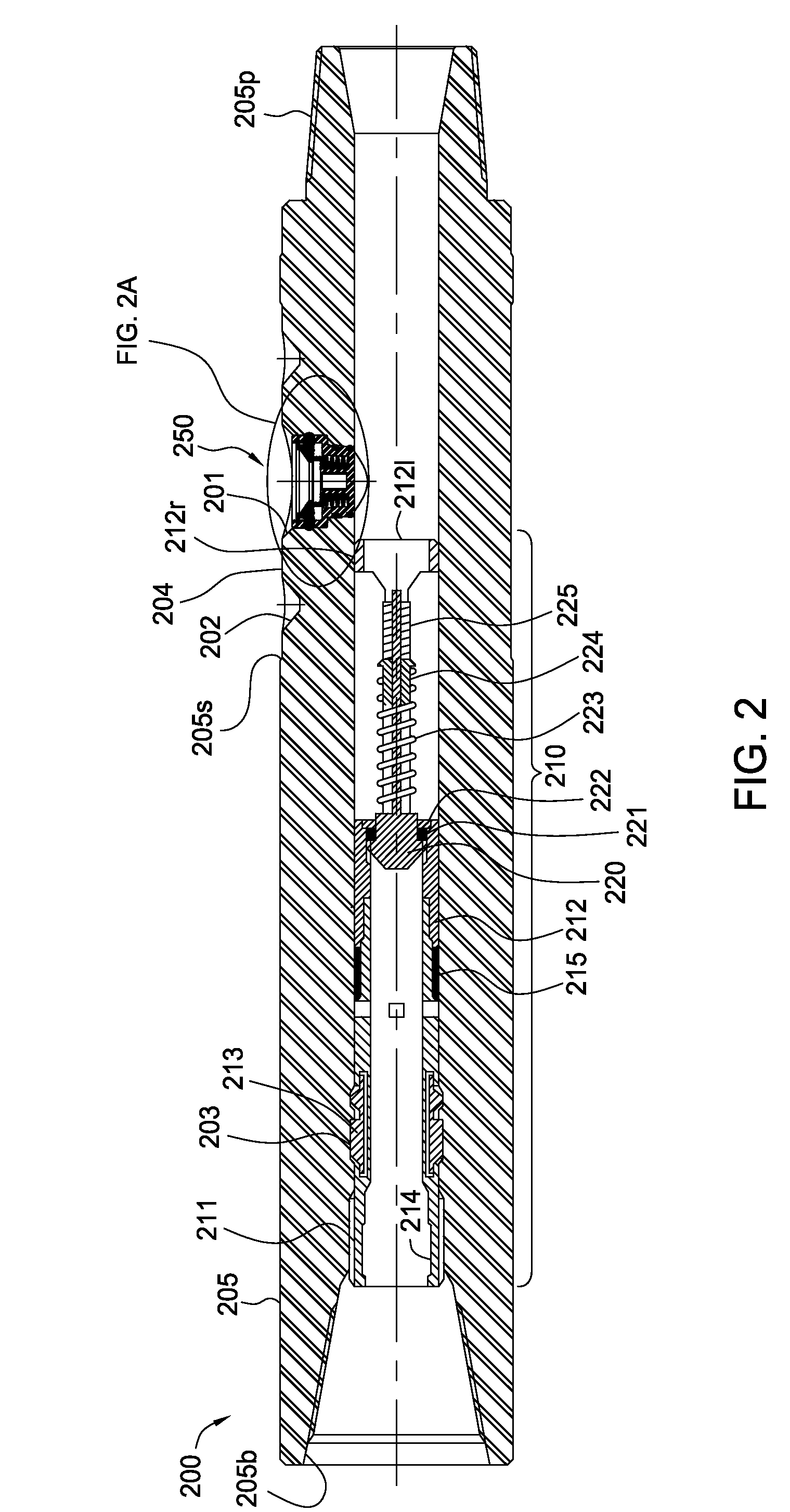Continuous flow drilling systems and methods
- Summary
- Abstract
- Description
- Claims
- Application Information
AI Technical Summary
Benefits of technology
Problems solved by technology
Method used
Image
Examples
Embodiment Construction
[0036]FIG. 2 is a cross-sectional view of a continuous flow sub (CFS) 200, according to one embodiment of the present invention. The CFS 200 may include a tubular housing 205, a float valve 210, and the plug 250. The tubular housing 205 may have a longitudinal bore therethrough, and a radial port 201 formed through a wall thereof in fluid communication with the bore. The housing 205 may also have a threaded coupling at each longitudinal end, such as box 205b formed in a first longitudinal end and a threaded pin 205p formed on a second longitudinal end, so that the housing may be assembled as part of the drill string 8. An outer surface of the housing 205 may taper at 205s from a greater diameter to a lesser diameter. The outer surface may then taper again and return to the greater diameter, thereby forming a recessed portion between the two tapers. The recessed portion may include one or more locator openings 202 formed therein, a seal face 204, and the port 201. A latch profile 203...
PUM
 Login to View More
Login to View More Abstract
Description
Claims
Application Information
 Login to View More
Login to View More - R&D
- Intellectual Property
- Life Sciences
- Materials
- Tech Scout
- Unparalleled Data Quality
- Higher Quality Content
- 60% Fewer Hallucinations
Browse by: Latest US Patents, China's latest patents, Technical Efficacy Thesaurus, Application Domain, Technology Topic, Popular Technical Reports.
© 2025 PatSnap. All rights reserved.Legal|Privacy policy|Modern Slavery Act Transparency Statement|Sitemap|About US| Contact US: help@patsnap.com



